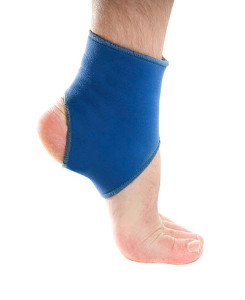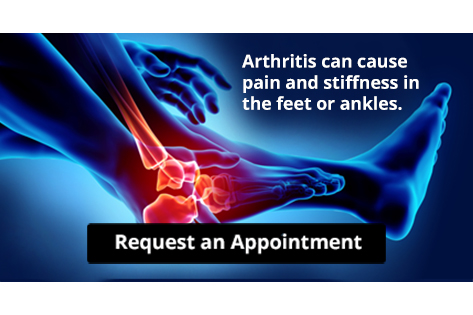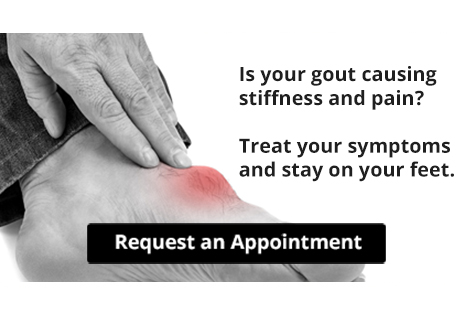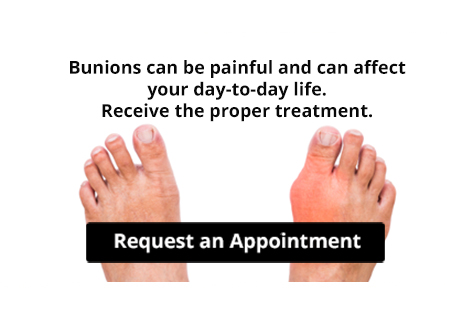Blog
Possible Reasons for Cracked Heels
 Cracked skin on the heels of your feet is a common foot condition. Usually, it is caused by environmental or lifestyle factors, such as wearing shoes that have open backs, wearing shoes that rub against your heels, standing for extended periods of time, using harsh soaps, taking long, hot showers, or living in a climate that is cold or has low humidity. If your cracked heels are caused by any of these factors, you can make small changes to heal cracks and prevent new ones from forming. For example, you could choose to wear shoes with a closed back, take shorter showers, and moisturize your feet regularly. Occasionally, cracked skin on the heels could be the first sign of more serious problems, like diabetes or neuropathy. If you notice any open sores or reduced sensation in the feet, or if the cracks on your heels become deep and painful, it is recommended that you see a podiatrist for treatment as soon as possible.
Cracked skin on the heels of your feet is a common foot condition. Usually, it is caused by environmental or lifestyle factors, such as wearing shoes that have open backs, wearing shoes that rub against your heels, standing for extended periods of time, using harsh soaps, taking long, hot showers, or living in a climate that is cold or has low humidity. If your cracked heels are caused by any of these factors, you can make small changes to heal cracks and prevent new ones from forming. For example, you could choose to wear shoes with a closed back, take shorter showers, and moisturize your feet regularly. Occasionally, cracked skin on the heels could be the first sign of more serious problems, like diabetes or neuropathy. If you notice any open sores or reduced sensation in the feet, or if the cracks on your heels become deep and painful, it is recommended that you see a podiatrist for treatment as soon as possible.
Cracked heels are unsightly and can cause further damage to your shoes and feet. If you have any concerns, contact Shaun J. Limon, DPM and Lisa Griffith-Limon, DPM from Limons Foot & Ankle Care. Our doctors can provide the care you need to keep you pain-free and on your feet.
Cracked Heels
Cracked heels appear unappealing and can make it harder for you walk around in sandals. Aside from looking unpleasant, cracked heels can also tear stockings, socks, and wear out your shoes. There are several methods to help restore a cracked heel and prevent further damage.
How Do You Get Them?
Dry skin is the number one culprit in creating cracked heels. Many athletes, walkers, joggers, and even swimmers suffer from cracked heels. Age and skin oil production play a role to getting cracked heels as well.
Promote Healing
Over the counter medicines can help, especially for those that need instant relief or who suffer from chronic dry feet.
Wear Socks – Wearing socks with medicated creams helps lock in moisture.
Moisturizers – Applying both day and night will help alleviate dryness which causes cracking.
Pumice Stones – These exfoliate and remove dead skin, which allows for smoother moisturizer application and better absorption into the skin.
Change in Diet
Eating healthy with a well-balanced diet will give the skin a fresh and radiant look. Your body responds to the kinds of food you ingest. Omega-3 fatty acids and zinc supplements can also revitalize skin tissue.
Most importantly, seek professional help if unsure how to proceed in treating cracked heels. A podiatrist will help you with any questions or information needed.
If you have any questions, please feel free to contact our office located in Lakewood Ranch, FL . We offer the newest diagnostic and treatment technologies for all your foot care needs.
How to Care for a Broken Toe at Home
 A broken toe is a common injury. Severe cases that cause the toe to be crooked, involve the big toe, or lead to an open wound should be seen by a medical professional as soon as possible. Once a doctor has looked at your toe and prescribed a treatment plan, you can help your toe heal by following home care instructions. Rest your toe by not doing any physical activity that causes pain. It may be best to keep your foot immobile whenever possible. For the first day after your injury, ice your toe for 20 minutes every hour that you are awake, and then 2-3 times a day during the following days, but do not put ice directly on the skin. Keep your foot raised when possible to decrease swelling. If pain persists, ask your podiatrist about possible pain medications, such as a nonsteroidal anti-inflammatory drug. For more advice on how to help care for your broken toe at home, please consult with a podiatrist.
A broken toe is a common injury. Severe cases that cause the toe to be crooked, involve the big toe, or lead to an open wound should be seen by a medical professional as soon as possible. Once a doctor has looked at your toe and prescribed a treatment plan, you can help your toe heal by following home care instructions. Rest your toe by not doing any physical activity that causes pain. It may be best to keep your foot immobile whenever possible. For the first day after your injury, ice your toe for 20 minutes every hour that you are awake, and then 2-3 times a day during the following days, but do not put ice directly on the skin. Keep your foot raised when possible to decrease swelling. If pain persists, ask your podiatrist about possible pain medications, such as a nonsteroidal anti-inflammatory drug. For more advice on how to help care for your broken toe at home, please consult with a podiatrist.
A broken toe can be very painful and lead to complications if not properly fixed. If you have any concerns about your feet, contact Shaun J. Limon, DPM and Lisa Griffith-Limon, DPM from Limons Foot & Ankle Care. Our doctors will treat your foot and ankle needs.
What to Know About a Broken Toe
Although most people try to avoid foot trauma such as banging, stubbing, or dropping heavy objects on their feet, the unfortunate fact is that it is a common occurrence. Given the fact that toes are positioned in front of the feet, they typically sustain the brunt of such trauma. When trauma occurs to a toe, the result can be a painful break (fracture).
Symptoms of a Broken Toe
- Throbbing pain
- Swelling
- Bruising on the skin and toenail
- The inability to move the toe
- Toe appears crooked or disfigured
- Tingling or numbness in the toe
Generally, it is best to stay off of the injured toe with the affected foot elevated.
Severe toe fractures may be treated with a splint, cast, and in some cases, minor surgery. Due to its position and the pressure it endures with daily activity, future complications can occur if the big toe is not properly treated.
If you have any questions please feel free to contact our office located in Lakewood Ranch, FL . We offer the newest diagnostic and treatment technologies for all your foot and ankle needs.
Arthritis Can Cause Pain in the Feet and Ankles
When Should My Child See a Doctor for Ingrown Toenails?
An ingrown toenail is a condition in which the corner of the toenail grows into the surrounding skin. It occurs most frequently on the big toe, and can affect both children and adults. This condition can be very painful, and may also cause redness, swelling, and tenderness around the affected nail. There are several things you can do to care for your child’s ingrown toenail at home, including soaking the affected toe in warm water and elevating the corner of the nail. However, if home care methods are ineffective, or if your child gets ingrown toenails frequently, then you should take them to a podiatrist for treatment.
Ingrown toenails can become painful if they are not treated properly. For more information about ingrown toenails, contact Shaun J. Limon, DPM and Lisa Griffith-Limon, DPM of Limons Foot & Ankle Care. Our doctors can provide the care you need to keep you pain-free and on your feet.
Ingrown Toenails
Ingrown toenails occur when a toenail grows sideways into the bed of the nail, causing pain, swelling, and possibly infection.
Causes
- Bacterial infections
- Improper nail cutting such as cutting it too short or not straight across
- Trauma to the toe, such as stubbing, which causes the nail to grow back irregularly
- Ill-fitting shoes that bunch the toes too close together
- Genetic predisposition
Prevention
Because ingrown toenails are not something found outside of shoe-wearing cultures, going barefoot as often as possible will decrease the likeliness of developing ingrown toenails. Wearing proper fitting shoes and using proper cutting techniques will also help decrease your risk of developing ingrown toenails.
Treatment
Ingrown toenails are a very treatable foot condition. In minor cases, soaking the affected area in salt or antibacterial soaps will not only help with the ingrown nail itself, but also help prevent any infections from occurring. In more severe cases, surgery is an option. In either case, speaking to your podiatrist about this condition will help you get a better understanding of specific treatment options that are right for you.
If you have any questions please feel free to contact our office located in Lakewood Ranch, FL . We offer the newest diagnostic and treatment technologies for all your foot and ankle needs.
Helpful Techniques for Running Safely
 Running is an excellent form of physical activity, however it can also cause injury if improper training is practiced. There are a few useful techniques you can follow to help prevent running injuries. Regularly switching between the different types of surfaces you run on can be beneficial in keeping your leg muscles strong and avoiding straining your muscles. Wearing shoes that are specific to the type of running you enjoy can also help to prevent injury. Another technique that should be followed is tracking your mileage. By tracking your mileage, you’ll be able to get a good idea of when your shoes should be switched out to avoid running in worn out footwear. For more advice on how to avoid running injuries, please speak with a podiatrist.
Running is an excellent form of physical activity, however it can also cause injury if improper training is practiced. There are a few useful techniques you can follow to help prevent running injuries. Regularly switching between the different types of surfaces you run on can be beneficial in keeping your leg muscles strong and avoiding straining your muscles. Wearing shoes that are specific to the type of running you enjoy can also help to prevent injury. Another technique that should be followed is tracking your mileage. By tracking your mileage, you’ll be able to get a good idea of when your shoes should be switched out to avoid running in worn out footwear. For more advice on how to avoid running injuries, please speak with a podiatrist.
Exercising your feet regularly with the proper foot wear is a great way to prevent injuries. If you have any concerns about your feet, contact Shaun J. Limon, DPM and Lisa Griffith-Limon, DPM of Limons Foot & Ankle Care. Our doctors will treat your foot and ankle needs.
How to Prevent Running Injuries
Many common running injuries are caused by overuse and overtraining. When the back of the kneecap starts wearing out and starts causing pain in your knee, this is commonly referred to as runner’s knee. Runner’s knee is a decrease in strength in your quadriceps and can occur if you’re not wearing properly fitted or supporting shoes. To prevent runner’s knee, focusing on hip strengthening is a good idea, as well as strengthening your quads to keep the kneecaps aligned.
What Are Some Causes of Running Injuries?
- One cause of a common running injury is called iliotibial band syndrome.
- Plantar fasciitis is also another common injury.
- Stress fractures can occur from overtraining, lack of calcium, or even your running style.
Best Ways to Prevent Running Injuries
- Wear footwear that fits properly and suits your running needs.
- Running shoes are the only protective gear that runners have to safeguard them from injury.
- Make a training schedule. Adding strengthening exercises as well as regular stretching can help keep you strong and limber and can lessen the possibility of injuries.
- Stretching keeps muscles limber; this will help you gain better flexibility.
If you have any questions please feel free to contact our office located in Lakewood Ranch, FL . We offer the newest diagnostic and treatment technologies for all your foot and ankle needs.
Gout Pain Can Be Managed
Your Diet May Help Prevent Gout Attacks
 Gout is a type of arthritis that frequently affects the joints of the feet. If you have gout, you may experience gout attacks, sudden and severe onsets of pain, swelling, and inflammation in the affected joints. Gout is caused by an excess of uric acid in the bloodstream. Your diet can raise or lower the levels of uric acid in your blood. Eating foods that are high in purines, a natural substance found in certain foods such as red meat, seafood, and alcohol, can trigger gout. Fructose and sugar-sweetened beverages can also trigger gout attacks. Eating a balanced diet with fruit, vegetables, legumes, nuts, low fat dairy products, eggs, and whole grains can lower the risk of gout attacks. For more information about how to prevent gout attacks, it is suggested to consult with a podiatrist.
Gout is a type of arthritis that frequently affects the joints of the feet. If you have gout, you may experience gout attacks, sudden and severe onsets of pain, swelling, and inflammation in the affected joints. Gout is caused by an excess of uric acid in the bloodstream. Your diet can raise or lower the levels of uric acid in your blood. Eating foods that are high in purines, a natural substance found in certain foods such as red meat, seafood, and alcohol, can trigger gout. Fructose and sugar-sweetened beverages can also trigger gout attacks. Eating a balanced diet with fruit, vegetables, legumes, nuts, low fat dairy products, eggs, and whole grains can lower the risk of gout attacks. For more information about how to prevent gout attacks, it is suggested to consult with a podiatrist.
Gout is a foot condition that requires certain treatment and care. If you are seeking treatment, contact Shaun J. Limon, DPM and Lisa Griffith-Limon, DPM from Limons Foot & Ankle Care. Our doctors will treat your foot and ankle needs.
What Is Gout?
Gout is a type of arthritis caused by a buildup of uric acid in the bloodstream. It often develops in the foot, especially the big toe area, although it can manifest in other parts of the body as well. Gout can make walking and standing very painful and is especially common in diabetics and the obese.
People typically get gout because of a poor diet. Genetic predisposition is also a factor. The children of parents who have had gout frequently have a chance of developing it themselves.
Gout can easily be identified by redness and inflammation of the big toe and the surrounding areas of the foot. Other symptoms include extreme fatigue, joint pain, and running high fevers. Sometimes corticosteroid drugs can be prescribed to treat gout, but the best way to combat this disease is to get more exercise and eat a better diet.
If you have any questions please feel free to contact our office located in Lakewood Ranch, FL . We offer the newest diagnostic and treatment technologies for all your foot and ankle needs.
Caring for Ankle Sprains
 A sprained ankle is a common injury. It can occur quite easily just from a quick sideways movement or a twist of the ankle during sports or everyday activities. Sprained ankles vary in their severity, and medical intervention is usually necessary. In addition to following the doctor’s orders, you can help your ankle heal at home by following the R.I.C.E. acronym. Rest your ankle by avoiding activities that cause pain and discomfort. Ice your ankle for about 20 minutes at a time during the first two days after your injury. Compress your ankle by wrapping it with an elastic bandage or brace to help stop swelling. Elevate your ankle above the heart as often as possible to reduce swelling. If you have sprained your ankle, it is recommended that you are under the care of a podiatrist.
A sprained ankle is a common injury. It can occur quite easily just from a quick sideways movement or a twist of the ankle during sports or everyday activities. Sprained ankles vary in their severity, and medical intervention is usually necessary. In addition to following the doctor’s orders, you can help your ankle heal at home by following the R.I.C.E. acronym. Rest your ankle by avoiding activities that cause pain and discomfort. Ice your ankle for about 20 minutes at a time during the first two days after your injury. Compress your ankle by wrapping it with an elastic bandage or brace to help stop swelling. Elevate your ankle above the heart as often as possible to reduce swelling. If you have sprained your ankle, it is recommended that you are under the care of a podiatrist.
Although ankle sprains are common, they aren’t always minor injuries. If you need your ankle injury looked at, contact Shaun J. Limon, DPM and Lisa Griffith-Limon, DPM from Limons Foot & Ankle Care. Our doctors can provide the care you need to keep you pain-free and on your feet.
How Does an Ankle Sprain Occur?
Ankle sprains are the result of a tear in the ligaments within the ankle. These injuries may happen when you make a rapid shifting movement while your foot is planted. A less common way to sprain your ankle is when your ankle rolls inward while your foot turns outward.
What Are the Symptoms?
- Pain at the sight of the tear
- Bruising/Swelling
- Ankle area is tender to touch
- In severe cases, may hear/feel something tear
- Skin discoloration
Preventing a Sprain
- Wearing appropriate shoes for the occasion
- Stretching before exercises and sports
- Knowing your limits
Treatment of a Sprain
In many cases, the RICE method (Rest, Ice, Compression, and Elevate) is used to treat ankle sprains. However, you should see a podiatrist to see which treatment option would work best with your injury. In severe cases, surgery may be required.
It is important to ask your doctor about rehab options after you receive treatment for your injury. Stretching, strength training, and balance exercises may help the ankle heal while also preventing further injury.
If you have any questions, please feel free to contact our office located in Lakewood Ranch, FL . We offer the newest diagnostic and treatment technologies for all your foot care needs.
Are Bunions Affecting Your Everyday Life?
There Are Two Types of Corns
 A small area of thickened skin on the bottom of the foot may indicate a hard corn. It generally develops as a result of excess friction that can come from wearing shoes and socks that do not fit correctly. A corn can form between the toes, and this is referred to as a soft corn. It can be quite painful, and it may feel better to wear a corn pad over the affected area. This can help the corn to gradually reduce in size, and mild relief may be felt when larger size shoes are worn, as they can diminish excess friction. For corns that are severe, salicylic acid may be applied to the affected area, and the corn will eventually be removed. Corns can be quite bothersome, and if you are afflicted with hard or soft corns, it is recommended that you consult with a podiatrist.
A small area of thickened skin on the bottom of the foot may indicate a hard corn. It generally develops as a result of excess friction that can come from wearing shoes and socks that do not fit correctly. A corn can form between the toes, and this is referred to as a soft corn. It can be quite painful, and it may feel better to wear a corn pad over the affected area. This can help the corn to gradually reduce in size, and mild relief may be felt when larger size shoes are worn, as they can diminish excess friction. For corns that are severe, salicylic acid may be applied to the affected area, and the corn will eventually be removed. Corns can be quite bothersome, and if you are afflicted with hard or soft corns, it is recommended that you consult with a podiatrist.
Corns can make walking very painful and should be treated immediately. If you have questions regarding your feet and ankles, contact Shaun J. Limon, DPM and Lisa Griffith-Limon, DPM of Limons Foot & Ankle Care. Our doctors will treat your foot and ankle needs.
Corns: What Are They? And How Do You Get Rid of Them?
Corns are thickened areas on the skin that can become painful. They are caused by excessive pressure and friction on the skin. Corns press into the deeper layers of the skin and are usually round in shape.
Ways to Prevent Corns
There are many ways to get rid of painful corns such as:
- Wearing properly fitting shoes that have been measured by a professional
- Wearing shoes that are not sharply pointed or have high heels
- Wearing only shoes that offer support
Treating Corns
Although most corns slowly disappear when the friction or pressure stops, this isn’t always the case. Consult with your podiatrist to determine the best treatment option for your case of corns.
If you have any questions please feel free to contact our offices located in Bradenton and Lakewood Ranch, FL . We offer the newest diagnostic and treatment technologies for all your foot and ankle needs.
Read more about Everything You Need to Know About CornsMore...
Preventing Foot Blisters
 Blisters are small pockets of raised skin filled with fluid. A blister on the foot can develop for a variety of reasons, however, the main culprit is friction. To prevent the development of blisters from friction, it is important to wear the proper shoes. Your footwear should be properly-fitted and supportive, providing your toes with enough room to move in and adequate cushioning while you walk or stand. Other causes of blisters can be excessive moisture, an allergic reaction to a substance, or an underlying medical condition. Prevent blisters caused by moisture by using a foot powder, antiperspirant, or moisture-wicking socks, especially if you are an athlete or prone to excessive sweating. If you have gotten a blister in the past due to an allergic reaction to specific powders, lotions, or soaps, avoid using these products. Seek prompt treatment for medical conditions that may cause blistering, such as viral infections or eczema. For more information on what you can do to prevent foot blisters, consult with a podiatrist today.
Blisters are small pockets of raised skin filled with fluid. A blister on the foot can develop for a variety of reasons, however, the main culprit is friction. To prevent the development of blisters from friction, it is important to wear the proper shoes. Your footwear should be properly-fitted and supportive, providing your toes with enough room to move in and adequate cushioning while you walk or stand. Other causes of blisters can be excessive moisture, an allergic reaction to a substance, or an underlying medical condition. Prevent blisters caused by moisture by using a foot powder, antiperspirant, or moisture-wicking socks, especially if you are an athlete or prone to excessive sweating. If you have gotten a blister in the past due to an allergic reaction to specific powders, lotions, or soaps, avoid using these products. Seek prompt treatment for medical conditions that may cause blistering, such as viral infections or eczema. For more information on what you can do to prevent foot blisters, consult with a podiatrist today.
Blisters are prone to making everyday activities extremely uncomfortable. If your feet are hurting, contact Shaun J. Limon, DPM and Lisa Griffith-Limon, DPM of Limons Foot & Ankle Care. Our doctors can provide the care you need to keep you pain-free and on your feet.
Foot Blisters
Foot blisters develop as a result of constantly wearing tight or ill-fitting footwear. This happens due to the constant rubbing from the shoe, which can often lead to pain.
What Are Foot Blisters?
A foot blister is a small fluid-filled pocket that forms on the upper-most layer of the skin. Blisters are filled with clear fluid and can lead to blood drainage or pus if the area becomes infected.
How Do Blisters Form?
Blisters on the feet are often the result of constant friction of skin and material, usually by shoe rubbing. Walking in sandals, boots, or shoes that don’t fit properly for long periods of time can result in a blister. Having consistent foot moisture and humidity can easily lead to blister formation.
Prevention & Treatment
It is important to properly care for the affected area in order to prevent infection and ease the pain. Do not lance the blister and use a Band-Aid to provide pain relief. Also, be sure to keep your feet dry and wear proper fitting shoes. If you see blood or pus in a blister, seek assistance from a podiatrist.
If you have any questions, please feel free to contact our office located in Lakewood Ranch, FL . We offer the newest diagnostic and treatment technologies for all your foot care needs.
Are You Suffering From Ingrown Toenails?
Who Needs an Ankle Brachial Index Test?
 Peripheral artery disease, also known as PAD, is a condition that results in poor circulation to the lower limbs. Typical symptoms of PAD include leg pain or muscle cramps when walking, numbness, weakness, or coldness in your legs. An ankle brachial index is a quick, noninvasive, and painless test used to screen for PAD. The measurements can highlight any potential problems, like blockages or partial blockages in blood flow to your extremities.To do this test, a doctor simply takes your blood pressure at your arms and at your ankles and compares the numbers to come up with a numerical ratio that represents your risk of having or developing PAD. While anyone can get the ankle brachial index test, people who have pre-existing risk factors for developing PAD are especially encouraged to undergo this screening. Risk factors include a history of smoking, high blood pressure, high cholesterol, diabetes, and atherosclerosis. For more information about the ankle brachial index and other tests for PAD, speak with a podiatrist today.
Peripheral artery disease, also known as PAD, is a condition that results in poor circulation to the lower limbs. Typical symptoms of PAD include leg pain or muscle cramps when walking, numbness, weakness, or coldness in your legs. An ankle brachial index is a quick, noninvasive, and painless test used to screen for PAD. The measurements can highlight any potential problems, like blockages or partial blockages in blood flow to your extremities.To do this test, a doctor simply takes your blood pressure at your arms and at your ankles and compares the numbers to come up with a numerical ratio that represents your risk of having or developing PAD. While anyone can get the ankle brachial index test, people who have pre-existing risk factors for developing PAD are especially encouraged to undergo this screening. Risk factors include a history of smoking, high blood pressure, high cholesterol, diabetes, and atherosclerosis. For more information about the ankle brachial index and other tests for PAD, speak with a podiatrist today.
Vascular testing plays an important part in diagnosing disease like peripheral artery disease. If you have symptoms of peripheral artery disease, or diabetes, consult with Shaun J. Limon, DPM and Lisa Griffith-Limon, DPM from Limons Foot & Ankle Care. Our doctors will assess your condition and provide you with quality foot and ankle treatment.
What Is Vascular Testing?
Vascular testing checks for how well blood circulation is in the veins and arteries. This is most often done to determine and treat a patient for peripheral artery disease (PAD), stroke, and aneurysms. Podiatrists utilize vascular testing when a patient has symptoms of PAD or if they believe they might. If a patient has diabetes, a podiatrist may determine a vascular test to be prudent to check for poor blood circulation.
How Is it Conducted?
Most forms of vascular testing are non-invasive. Podiatrists will first conduct a visual inspection for any wounds, discoloration, and any abnormal signs prior to a vascular test.
The most common tests include:
- Ankle-Brachial Index (ABI) examination
- Doppler examination
- Pedal pulses
These tests are safe, painless, and easy to do. Once finished, the podiatrist can then provide a diagnosis and the best course for treatment.
If you have any questions, please feel free to contact our offices located in Bradenton and Lakewood Ranch, FL . We offer the newest diagnostic and treatment technologies for all your foot care needs.
Read more about Vascular Testing in Podiatry
How Can You Get Athlete’s Foot?
 If you have a rash between your toes or find your feet to be itchy, scaly, stinging or burning, you may have contracted athlete’s foot. Athlete’s foot, or tinea pedis, is a contagious fungal infection of the skin on the feet. It doesn’t just affect athletes, anyone can develop this fungus. Your feet are exposed to the tinea fungus when they come in contact with a contaminated surface. Communal showers, locker rooms, public swimming pools, and gyms are often crawling with the fungus that causes athlete’s foot. If your feet are damp from water or sweat, they are extra susceptible to picking up this fungus. As athlete’s foot is highly contagious, sharing contaminated items, such as towels, shoes or socks, also puts you at risk. If you have athlete’s foot it is strongly recommended that you see a podiatrist who can prescribe the appropriate treatment.
If you have a rash between your toes or find your feet to be itchy, scaly, stinging or burning, you may have contracted athlete’s foot. Athlete’s foot, or tinea pedis, is a contagious fungal infection of the skin on the feet. It doesn’t just affect athletes, anyone can develop this fungus. Your feet are exposed to the tinea fungus when they come in contact with a contaminated surface. Communal showers, locker rooms, public swimming pools, and gyms are often crawling with the fungus that causes athlete’s foot. If your feet are damp from water or sweat, they are extra susceptible to picking up this fungus. As athlete’s foot is highly contagious, sharing contaminated items, such as towels, shoes or socks, also puts you at risk. If you have athlete’s foot it is strongly recommended that you see a podiatrist who can prescribe the appropriate treatment.
Athlete’s foot is an inconvenient condition that can be easily reduced with the proper treatment. If you have any concerns about your feet and ankles, contact Shaun J. Limon, DPM and Lisa Griffith-Limon, DPM from Limons Foot & Ankle Care. Our doctors will treat your foot and ankle needs.
Athlete’s Foot: The Sole Story
Athlete's foot, also known as tinea pedis, can be an extremely contagious foot infection. It is commonly contracted in public changing areas and bathrooms, dormitory style living quarters, around locker rooms and public swimming pools, or anywhere your feet often come into contact with other people.
Solutions to Combat Athlete’s Foot
- Hydrate your feet by using lotion
- Exfoliate
- Buff off nails
- Use of anti-fungal products
- Examine your feet and visit your doctor if any suspicious blisters or cuts develop
Athlete’s foot can cause many irritating symptoms such as dry and flaking skin, itching, and redness. Some more severe symptoms can include bleeding and cracked skin, intense itching and burning, and even pain when walking. In the worst cases, Athlete’s foot can cause blistering as well. Speak to your podiatrist for a better understanding of the different causes of Athlete’s foot, as well as help in determining which treatment options are best for you.
If you have any questions please feel free to contact our offices located in Bradenton and Lakewood Ranch, FL . We offer the newest diagnostic and treatment technologies for all your foot and ankle needs.
Read more about Athlete’s Foot




